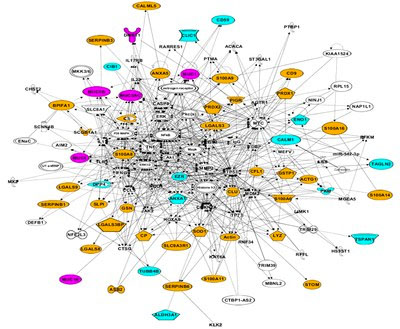Mucin Interactome
Mucus is a strong polymer network. The contributions of mucins and other globular proteins, however, have not yet been fully elucidated. The gel-forming mucins, like MUC5AC and MUC5B in particular, are the major constituents of the secreted airway mucus gel. A previously held belief is that they contribute greatly to the biophysical properties of mucus that permit a smooth gel flow on the healthy epithelium in a well-hydrated environment. Despite substantial research on the subject, it is still not clear whether mucin polymers are the key regulators of the biophysical properties of mucus gels. In an effort to address the normal composition of airway mucus, we observed that at least 30% of the proteins in HBE secretion and induced sputum are formed by distinct protein complexes centered around mucins. We propose that these complexes constitute a discrete secretory entity we call the “mucin interactome”. The basis of these structures and their function(s), e.g., and their contribution to the biophysical and biological functions of airway mucus, remain a mystery and are the focus of this project. We hypothesized that mucin-protein interactions dynamically control the critical innate immune functions of the airway mucosal barrier, including its physical (rheological), and biological (antimicrobial, antioxidant) functions. Therefore, as a first step toward testing this hypothesis, HBE cells and a broad range of biochemical, biophysical and proteomic approaches were employed. The aim of this study was to rigorously characterize the airway mucin interactome and study its effects on the basic rheological functions of airway mucus, including hydration, viscosity, and elasticity that provide optimal innate airway defense.
